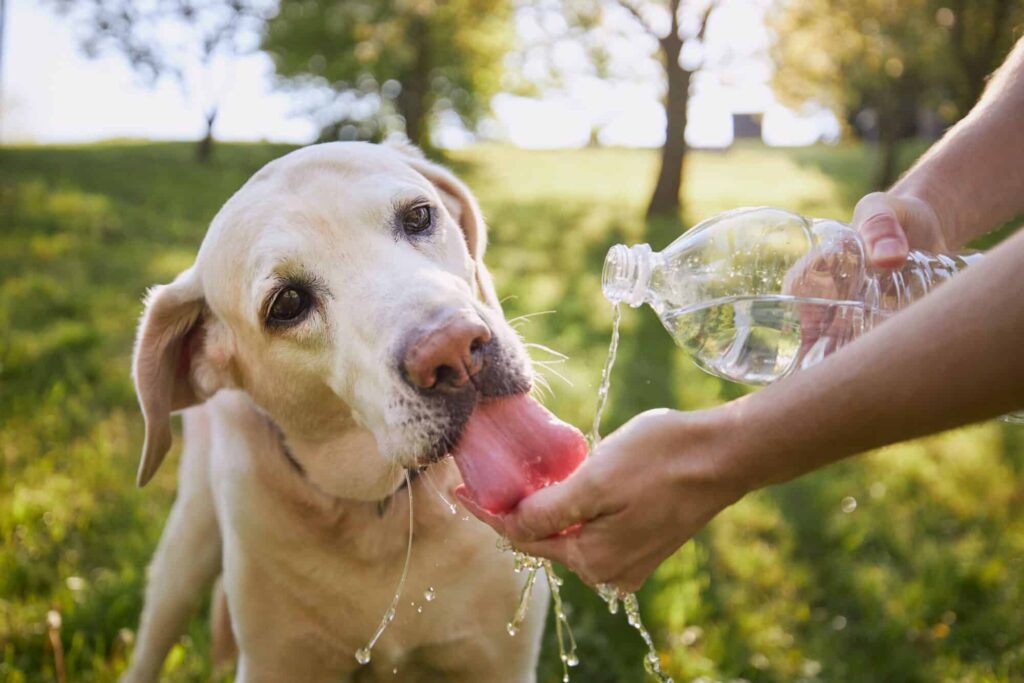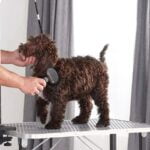Table of Contents
Pet hydration tips for summer are crucial to ensuring your furry friend stays healthy and happy during the hot months. Dehydration can lead to serious health issues in pets, including heatstroke and kidney problems. By following these tips, you can help your pet stay hydrated and cool, making summer a safe and enjoyable season for them.

Provide Plenty of Fresh Water
One of the most important pet hydration tips for summer is to ensure your pet always has access to fresh, clean water. Change the water frequently and keep the water bowl in a cool, shaded area. Consider using a pet water fountain to encourage drinking, as the flowing water can be more appealing to pets.
Incorporate Wet Food into Their Diet
Adding wet food to your pet’s diet can help increase their water intake. Wet food has a higher moisture content compared to dry kibble, making it an excellent way to boost hydration. If your pet is accustomed to dry food, try mixing wet food with their regular meals to ease the transition.
Offer Ice Cubes and Frozen Treats
Ice cubes can be a fun and hydrating treat for pets during the summer. Simply drop a few ice cubes in their water bowl or let them lick ice cubes as a cool snack. You can also make frozen treats by blending pet-safe fruits with water and freezing the mixture in ice cube trays.
Monitor Water Intake
Keeping an eye on your pet’s water intake is crucial. On average, dogs need about one ounce of water per pound of body weight each day, while cats need slightly less. If you notice your pet drinking significantly less than usual, it may be a sign of dehydration or another health issue.
Use a Pet Hydration Pack
If you’re taking your pet on outdoor adventures, consider using a pet hydration pack. These packs are designed to carry water and have a built-in bowl, making it easy to provide water to your pet on the go. Hydration packs are especially useful for hikes, long walks, or beach trips.
Keep Pets Indoors During Peak Heat
Another essential pet hydration tip for summer is to keep your pet indoors during the hottest parts of the day, typically between 10 AM and 4 PM. Ensure your pet has a cool, shaded place to rest, and avoid strenuous activities during peak heat to prevent overheating and dehydration.
Provide Cooling Mats and Fans
Cooling mats and fans can help keep your pet cool and comfortable. Cooling mats are designed to stay cool without refrigeration, providing a soothing surface for your pet to lie on. Fans can also help circulate air and reduce heat in your home or outdoor space.
Recognize Signs of Dehydration
Understanding the signs of dehydration in pets is crucial for prompt action. Symptoms of dehydration include:
- Dry gums and nose
- Sunken eyes
- Lethargy
- Loss of skin elasticity
- Excessive panting
- Reduced appetite
If you notice any of these signs, offer water immediately and contact your veterinarian for further advice.
Offer Multiple Water Stations
Place several water bowls around your home and yard to ensure your pet always has easy access to water. This is especially important for larger homes or multi-pet households.
Use Pet-Safe Hydration Products
There are various pet-safe hydration products available, such as electrolyte solutions and hydration supplements. These can be particularly useful if your pet is active or if you live in a very hot climate. Consult your veterinarian for recommendations on the best products for your pet.
FAQs on Pet Hydration for Summer
How much water does my pet need during summer?
On average, dogs need about one ounce of water per pound of body weight daily, while cats need slightly less. However, during the summer, pets may require more water due to increased heat and activity levels.
Can I give my pet flavored water?
It’s best to stick with plain, fresh water for hydration. Some flavored waters contain additives or artificial sweeteners that can be harmful to pets. However, adding a small amount of pet-safe broth to their water can encourage drinking.
Are there specific signs of dehydration in pets?
Yes, signs of dehydration include dry gums and nose, sunken eyes, lethargy, loss of skin elasticity, excessive panting, and reduced appetite. If you notice these symptoms, provide water immediately and consult your veterinarian.
How can I encourage my pet to drink more water?
Ensure fresh water is always available, incorporate wet food into their diet, offer ice cubes and frozen treats, and use a pet water fountain. Additionally, monitor their water intake and consult your veterinarian for further advice if needed.
What should I do if my pet refuses to drink water?
If your pet refuses to drink water, try offering wet food, flavored water with pet-safe broth, or ice cubes. Monitor their behavior and consult your veterinarian if they continue to refuse water, as this may indicate an underlying health issue.
Can I take my pet on outdoor activities during summer?
Yes, but it’s important to take precautions. Provide plenty of water, use a pet hydration pack, avoid peak heat hours, and take frequent breaks in shaded areas. Monitor your pet for signs of overheating and dehydration.
Conclusion
Ensuring your pet stays hydrated during the summer is crucial for their health and well-being. By following these pet hydration tips for summer, such as providing fresh water, incorporating wet food, offering ice cubes and frozen treats, and monitoring their water intake, you can help keep your pet cool, comfortable, and hydrated. Always be attentive to signs of dehydration and consult your veterinarian for personalized advice.










